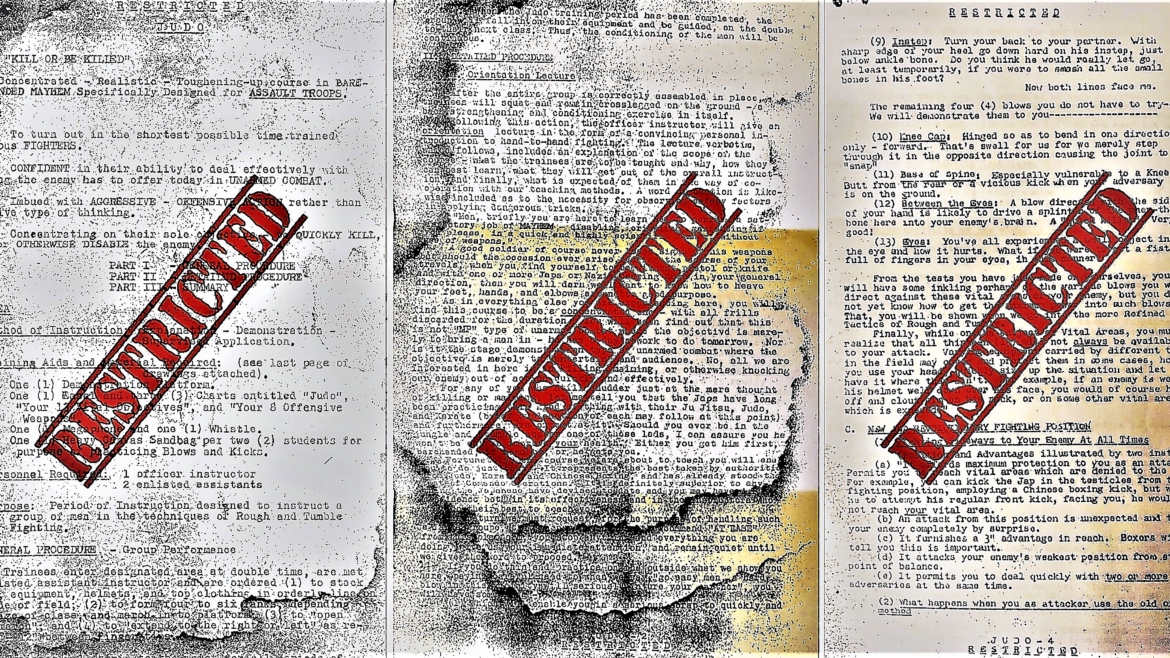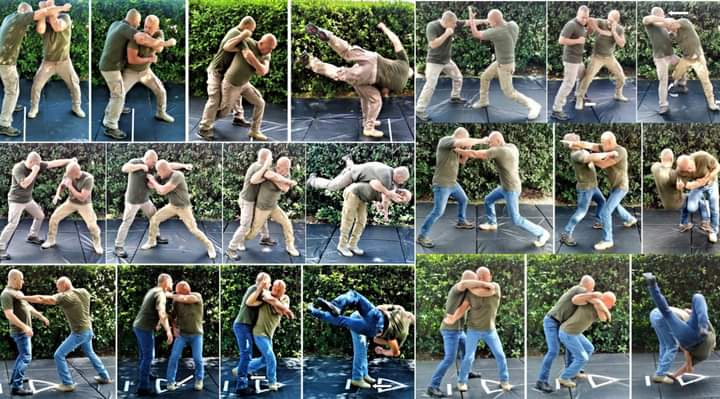This article is about honoring a hero…..a fallen hero…..a ‘Commando’ instructor at the Amphibious Training Center (ATC) who created the 4th Division Ranger program and the online pdf file commonly refered to as the WW2 Restricted Judo syllabus. Having been retyped on a computer the “WW2 Restricted judo” syllabus pdf has been available on the internet for years, found in websites like scribd.com and in the files sections various WWII era combatives related Facebook groups.
When it comes to the subject of Combat judo, one of the most interesting documents that is out there and readily available in pdf form on the old inter-web is the “WW2 Restricted Judo syllabus”. Not much is mentioned within the online pdf document itself about where it actually came from or who put it together or what units used it. You honestly couldn’t escape the title “RESTRICTED JUDO” and the motto “Kill or be Killed”.
Restricted Judo was obviously a document that reflected the WW2 era at it’s on set. This “restricted Judo” document has always captured my interest. I personally have had my questions regarding it’s origins. The recent information that has come to me plus what I have found in internet archives not only reveal the correct name of the course, but its origins and who it actually came from..
Firstly the original typewritten document itself is not titled “RESTRICTED JUDO” it’s simply titled “JUDO”. The document is/was marked as RESTRICTED at the top and bottom of every page, indicating that the subject material (judo) within the document is restricted (top section of front page pictured below).
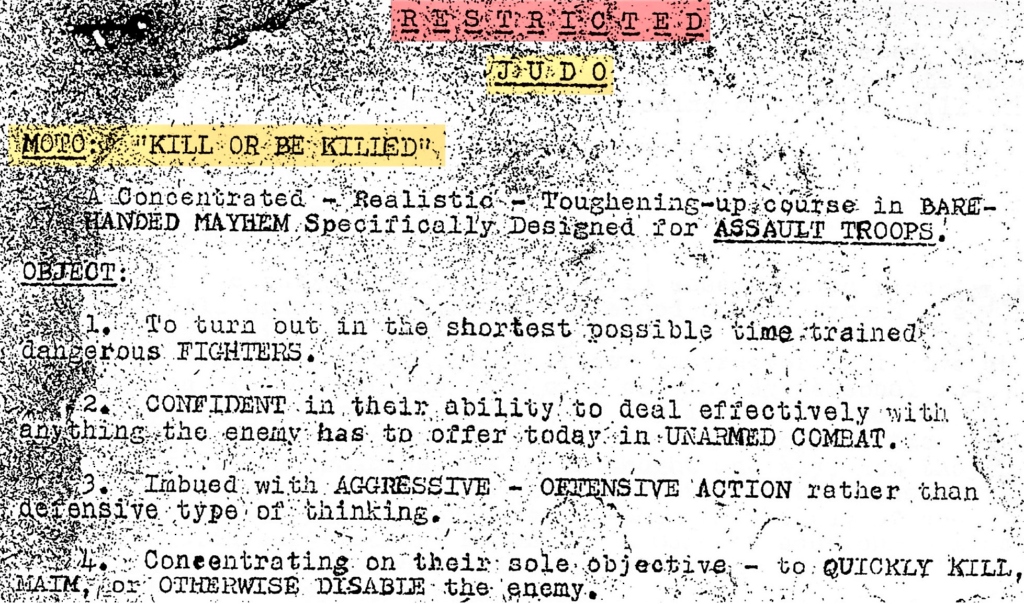
The Judo fighting course was “designed to teach the soldier how to kill with his bare hands and to condition him mentally specifically for that task. The objective was to train dangerous fighters, confident of their ability to deal effectively with anything the enemy had to offer in unarmed combat, and to instill, by persistent instruction, in the soldier an aggressive, offensive approach to battle.” The Judo course concentrated on the enemy’s 13 vital areas to strike (pictured below).
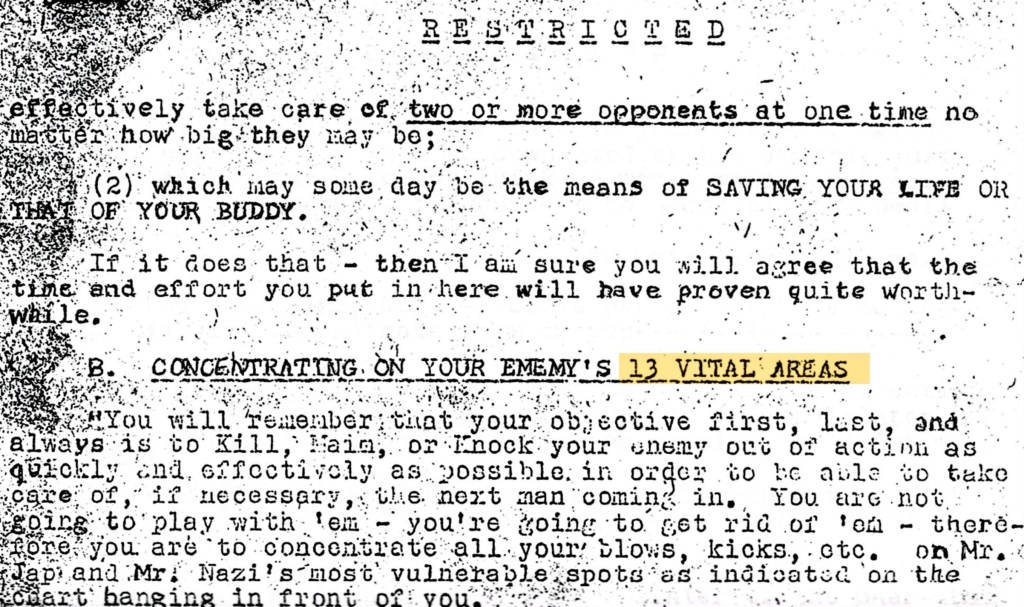
The computer-generated retyped reprinted version that has been accessible on the internet for years made it both interesting and questionable in my mind. Was it authentic? Why wasn’t there an actual copy of the original type written document ever presented? Was it actually a part of a military training curriculum? Who wrote it?
On the hunt for the original
As mentioned before there were no dates on the pdf file or any identifying markers or nomenclature. Despite the sparse information regarding its origins, recently information found in internet and archive searches from various sources point to it’s origins and authenticity.
In 1946 the Army Ground Forces (AGF) did a historical study on the Army’s Amphibious Training Center. Within the pages of the study a brief description of the ATC’s Hand to Hand Combat training referred to a Judo course that had as it’s motto “Kill or Be Killed” (pictured below).
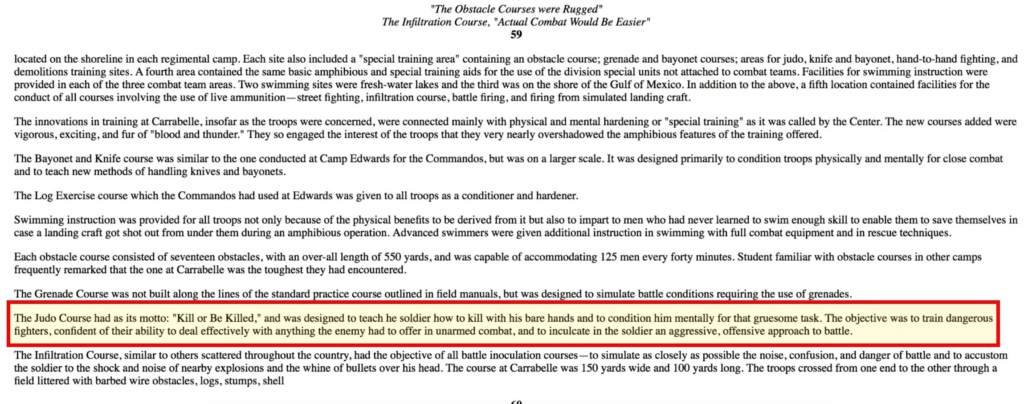
Amphibious operations prior to WW2 had been limited in scope and operations on the grand scale of those conducted in Africa, Sicily, and Italy had not “been officially anticipated. The situation, “both strategically and tactically, shortly after this country’s entrance into the second World War soon indicated that landings on a large scale would have to be planned and executed in order to defeat the enemy”. In amphibious operations Army planners always had operational and logistical considerations that were far beyond the concerns of the Navy and even the capabilities of the Marines. This lead to the Army’s Amphibious Training Center being established at Camp Clarence R. Edwards, Massachusetts. However, just after a few months the ATC was relocated to Carrabelle, Florida (later renamed Camp Gordon Johnston) in November of the same year.
Camp Gordon Johnston in Florida had space to simultaneously train a reinforced infantry division, the 2nd ESB, the ATC staff, and the 75th Composite Infantry Training Battalion. Each Regimental Combat Team camp had its own ‘special training area’ with obstacle, grenade, and bayonet courses. These locations also had sites for judo, hand-to-hand combat, Knife and bayonet fighting and live explosives training.
 Pictured above: “As special troops penetrated inland, they demonstrated lessons learned in “judo fighting” and wild west technique of fire from unusual and impromptu positions. They have also been trained in street and house to house fighting methods.”– Knoxville News Sentinel, Dec. 22, 1942
Pictured above: “As special troops penetrated inland, they demonstrated lessons learned in “judo fighting” and wild west technique of fire from unusual and impromptu positions. They have also been trained in street and house to house fighting methods.”– Knoxville News Sentinel, Dec. 22, 1942
In 1943 as the program was under way at Camp Gordon Johnston, Newsweek ran an article on the Amphibious Training Center and specifically points out that the judo program concentrated on the enemies 13 vital areas.
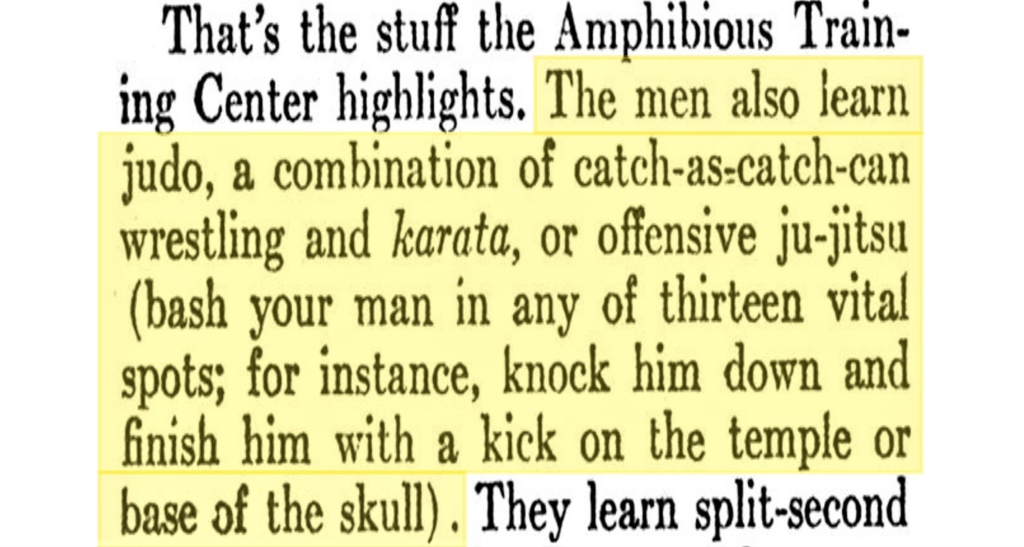
Aside from the description of the course in the AGF study, as well the description of the training in the Newsweek article referencing the 13 vital areas to strike, there is also a reference to karate misspelled as “Karata” in the 1943 Newsweek article (pictured above). The Karate reference in the original judo document may very well be the first mention of the term Karate in any combatives programs.

Where did the “restricted Judo” document come from?
Infantry Captain (CPT) Oscar L. Joyner, Jr., 4th Division, was prepared to organize what was referred to as a ‘shoestring’ commando program. This was after he went thru six weeks of Commando training at Camp William, Achnacarry, Scotland, in 1942. According to his family, Joyner had been sent to Scotland where he had taken Commando training taught by the British S.A.S.
Immediately upon completion of his commando training at Camp William, Joyner was diverted for ‘Commando’ instructor duty at the new Amphibious Training Center (ATC) at Camp Clarence R. Edwards, Massachusetts. Assigned to its Commando Division, Joyner was to train the federalized NG 36th ID from 24 August to 4 October 1942 as directed by Major (MAJ) William B. Kunzig. The Army Ground Forces ordered the immediate relocation of the ATC to the Florida. The ATC staff was to begin training the 38th ID on 23 November 1942.
After helping with the transition of the ATC to Camp Gordon Johnston near Carrabelle, Florida, Captain Joyner returned to Camp Gordon and was assigned to Division G-3 to organize a Ranger program. CPT Joyner lengthened and reduced Ranger training curriculum based on conditions at Fort Dix, New Jersey (April to August 1943) and Camp Johnston, Fl. (September through November 1943) while engaged in the 3rd Corps Carrabelle Maneuvers. While the redesignated 4th Infantry Division (April 1943) was at Camp Johnston, its infantry regiments did amphibious operations when not committed. CPT Joyner, a former ATC instructor, could recommend the best training for the time available.
For two years Captain Joyner organized, taught and oversaw the commando, ranger and amphibious training. He was sent from base to base implementing his ranger/commando “train the trainer programs”.
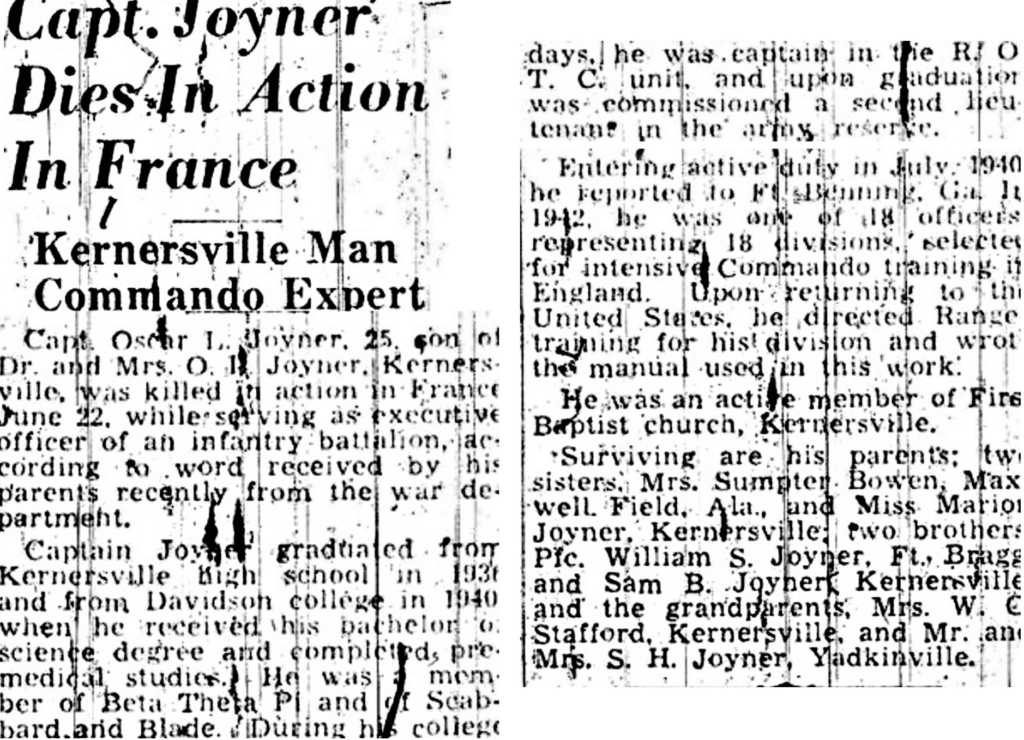
On June 21 1944, just 25 years young, Captain Joyner was killed in action in France during the attack toward Cherbourg, in the area around Gonneville / Le Thiel, south of the airfield at Maupertus.

Original Restricted Judo Document obtained!
During my research I obtained a photo copy of original typewritten “Restricted Judo” document at the UDT/Seal Museum in Ft. Pierce, Florida along with “Hand to Hand Combat for Amphibious Scouts” – United States Naval Amphibious Training Base, Fort Pierce, Florida. Why would a Navy Museum in Ft. Pierce, Florida have the restricted judo course in their possession? According to records and a copy of Capt Joyner’s memorial service given at his home town church, one of the many bases that Joyner was assigned to was Fort Pierce, Florida.(pictured below last sentence 1st paragraph).
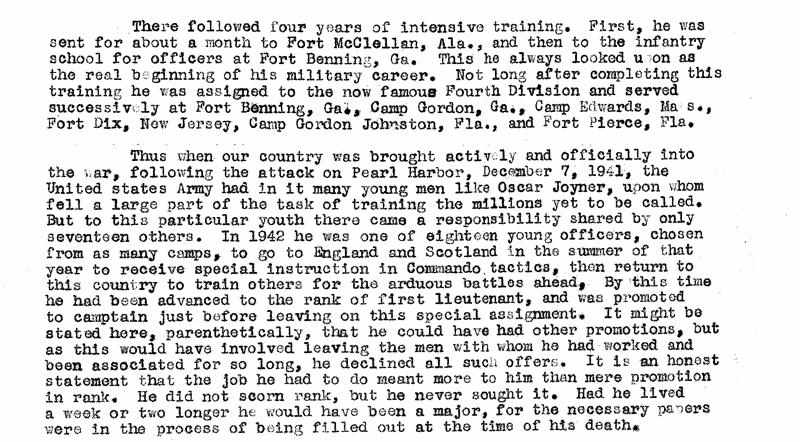
Captain Oscar Joyner, Jr. was awarded the Silver Star, and the Purple Heart for his actions in combat. The ‘Commando,’ Ranger, and amphibious training captain not only taught officers and enlisted men, but he organized, oversaw, and promulgated the program from its inception. Joyner’s Ranger training program no doubt help save countless numbers of young American soldiers. This alone makes the “Judo fighting” manual marked restricted even more special and unique.
Bibliography:
https://arsof-history.org/veritas.html
Commando & Ranger Training, Forging Junior Leaders to Toughen Men to Win in Combat by Charles H. Briscoe, PhD
1-22infantry.org/kia/joynerpers.htm
David Butler, Director, Camp Gordon Johnston WWII Museum
UDT/Seal Museum, Ft. Pierce, Florida
1943 Newsweek article
